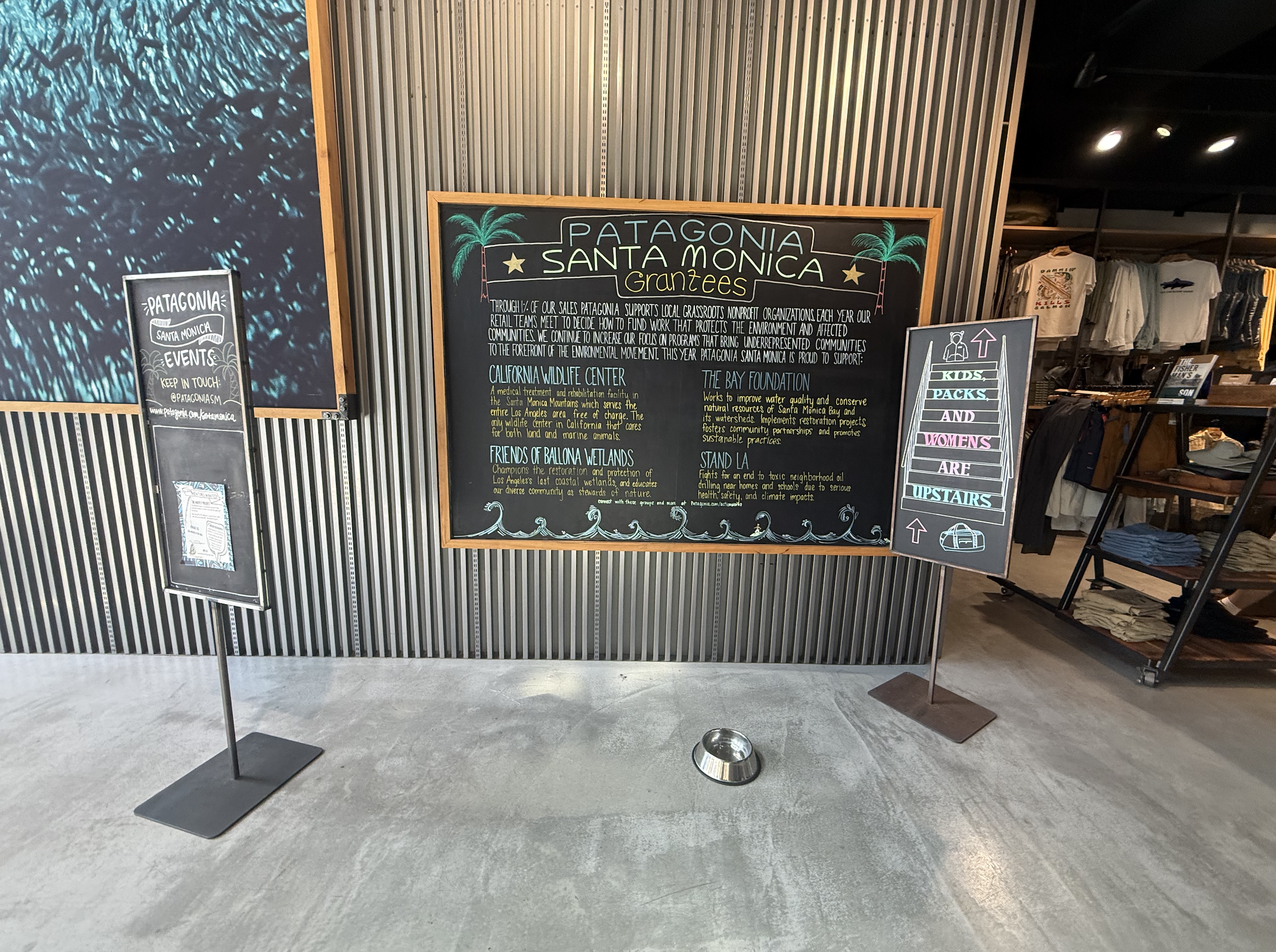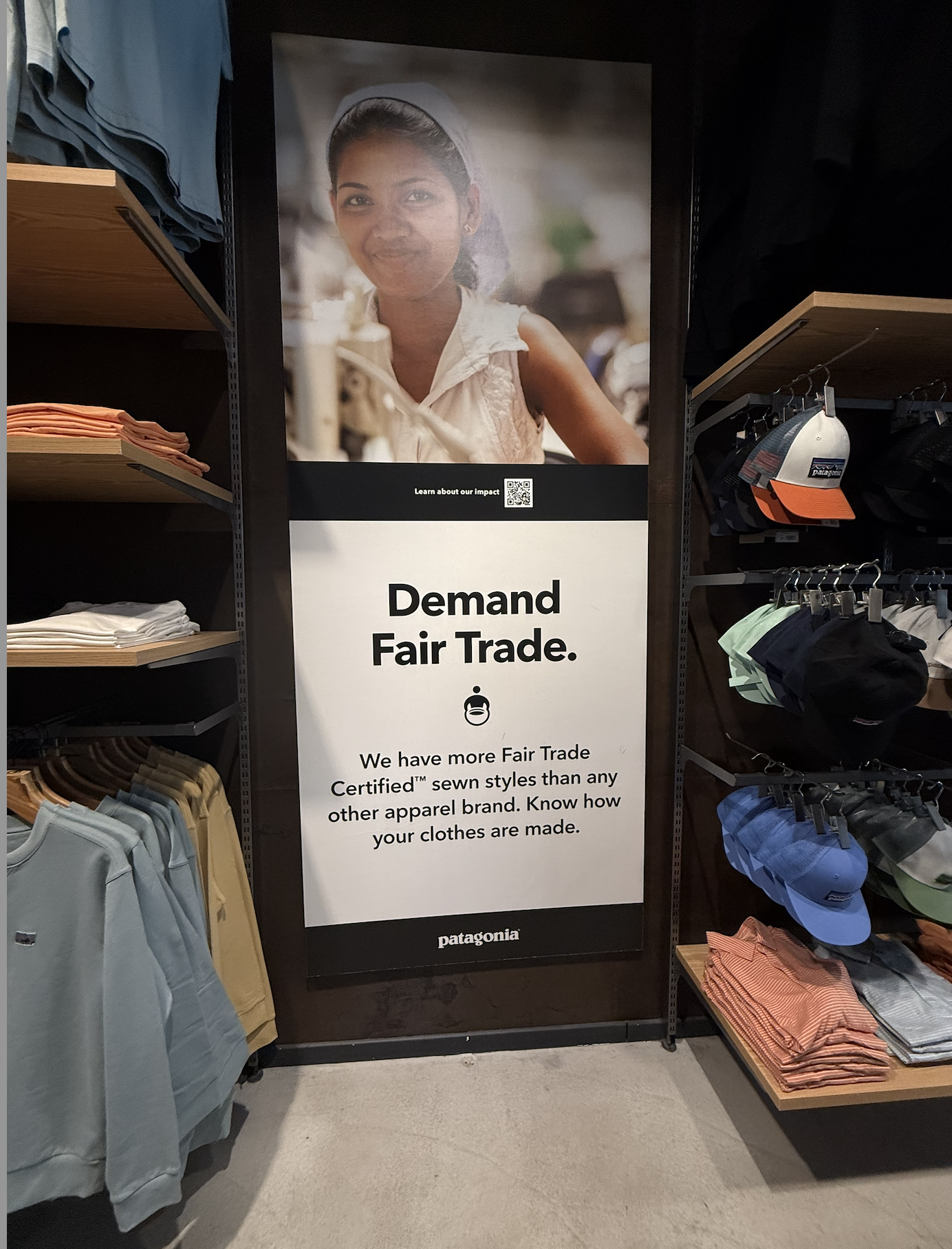The Tour of Patagonia Store – More than Just a Brand
This week, I had a small moment of serendipity.
I was walking through the Promenade street in Los Angeles when I spotted a Patagonia store.
I couldn't help myself — I had to go in.
And yes, I took some photos for you.
But first, a quick backstory on Patagonia:
Yvon Chouinard, a passionate climber and surfer, began by making better climbing gear for himself and his friends in the late 1950s.
At first, it was just about tools — durable equipment to tackle the toughest climbs.
Later, in 1973, he founded Patagonia to create better clothing for adventurers.
What started as a focus on functional gear quickly grew into something much bigger: protecting the wild places they loved to explore.
Patagonia wasn’t built just to sell more products.
It was built on the belief that business could be a tool to protect the planet — and building a brand was simply the vehicle.
Here’s what Patagonia says yes to:
Radical transparency about their supply chain and environmental impact
Repairing instead of replacing, through programs like Worn Wear
Environmental activism and supporting grassroots movements
Using business to inspire and implement solutions to the climate crisis
And here’s what they say no to:
Fast fashion and overconsumption
Growth for growth’s sake
Products that harm the environment
Partnerships that don’t align with their values
One of the most powerful examples?
Patagonia discovered that traditional fleece materials shed harmful microplastics into waterways.
In response, they phased out or reformulated some of their most popular fleece products — even though those products were highly profitable.
They chose innovation and environmental responsibility over short-term margins, staying true to their mission.
This wasn’t just branding. It was belief.
When I think about iconic brands, Patagonia is one of the first that comes to mind.
But what makes it so special isn’t just their jackets or backpacks — it’s the way they built a company around a mission, not a product.
Back to the store on Promenade...
Tour of the store
I put on the hat of a curious observer and walked in.
It didn’t feel like a typical clothing store.
It felt like a place driven by a mission — one that just happened to sell jackets and t-shirts.
The space was large and open, with natural materials on the walls, floors, and shelves. Soft, welcoming light filled the room.
To the left, a huge image covered the wall — a person immersed in water, fully connected to nature.
Next to it, handwritten text on a board caught my eye.
Oh — they have events? It instantly created a sense of community.
Near the entrance, a small detail: a dog water bowl.
A sweet, thoughtful touch.
The first ten seconds of the experience? Puzzling.
Was this a clothing store — or some kind of community space?
They care about the environment.
They care about details and small touches.
They care.
In hospitality — and really, in any business — the first ten seconds are crucial.
They create the first impression that sets the stage for everything that follows.
They decide whether someone wants to explore more — or walk away.
Think about the best hotel lobbies you've experienced.
A well-curated lobby creates a sense of anticipation, gently pulling you in and drawing a line between the outside world and the world of the hotel.
As I walked further into the Patagonia store, I kept noticing small and big details tucked into every corner.
Take a look.
awareness
commitment
history on the walls as you go upstairs
inspiring meaningful action, not just making noise
a quiet reminder that awareness should lead to action
My favorite part was this corner of the store below.
Once again, they reinforced their mission — encouraging repair over replacement and discouraging consumerism.
It’s not something you see often.
This was an experience.
It felt less like a retail space and more like a movement.
You could imagine them doing anything — starting a farm, running a community center — and it would feel just as natural.
They just happened to choose clothing as their craft.
That’s the power of a true mission-driven brand.
How You Can Apply Patagonia's Lessons to Your Hospitality Business
So what can we — as people building hospitality businesses — learn from Patagonia?
Here are a few powerful takeaways to apply to your destination, resort, or rental:
⚪ Lead with a Mission, Not Just a Product.
Ask yourself: What do I really stand for beyond providing a great stay?
Is it connecting people to nature? Preserving local culture? Supporting artisans?
When guests feel part of a bigger purpose, loyalty naturally follows.
⚪ Don't Be Afraid to Say No.
Many businesses get tempting offers — expansions, partnerships, new revenue streams.
Patagonia reminds us: If it doesn’t align with your mission, say no.
It’s hard in the short term, but it builds deep trust over time.
⚪ Celebrate Repair, Reuse, and Care.
Could you integrate a "Care for the Place" concept into your operations?
Offer reusable items instead of single-use.
Showcase how your property conserves resources.
Tell the story of how you support your environment and community.
⚪ Create a Space That Feels Bigger Than the Service It Sells.
Patagonia stores feel like activism hubs, not just stores.
Your property can feel like a sanctuary for connection, reflection, and inspiration — not just a place to sleep.
Think about how every detail — from your welcome signs to your amenities — can reinforce that feeling.
⚪ Expand the Brand Without Losing the Soul.
Patagonia added food (Patagonia Provisions) because it deepened their mission of sustainability.
If you’re adding services like cafés, events, or retreats, choose ones that reinforce your core purpose.
Bottom line:
Create more than a place to stay.
Create a place people feel part of.
That's how you create a destination that becomes unforgettable — and yes, maybe even makes the world a little better too.








